The Correct Golf Grip to Fix Your Slice
The Correct Golf Grip Could Be All You Need to Finally Cure Your Slice.
If you can’t stop slicing the golf ball, the problem could be as simple as your grip. This seemingly insignificant detail can cause you to open or close your clubface at impact, changing the shape of your ball flight.
Let’s explore all the aspects of the grip you need to understand in order to finally fix your slice.
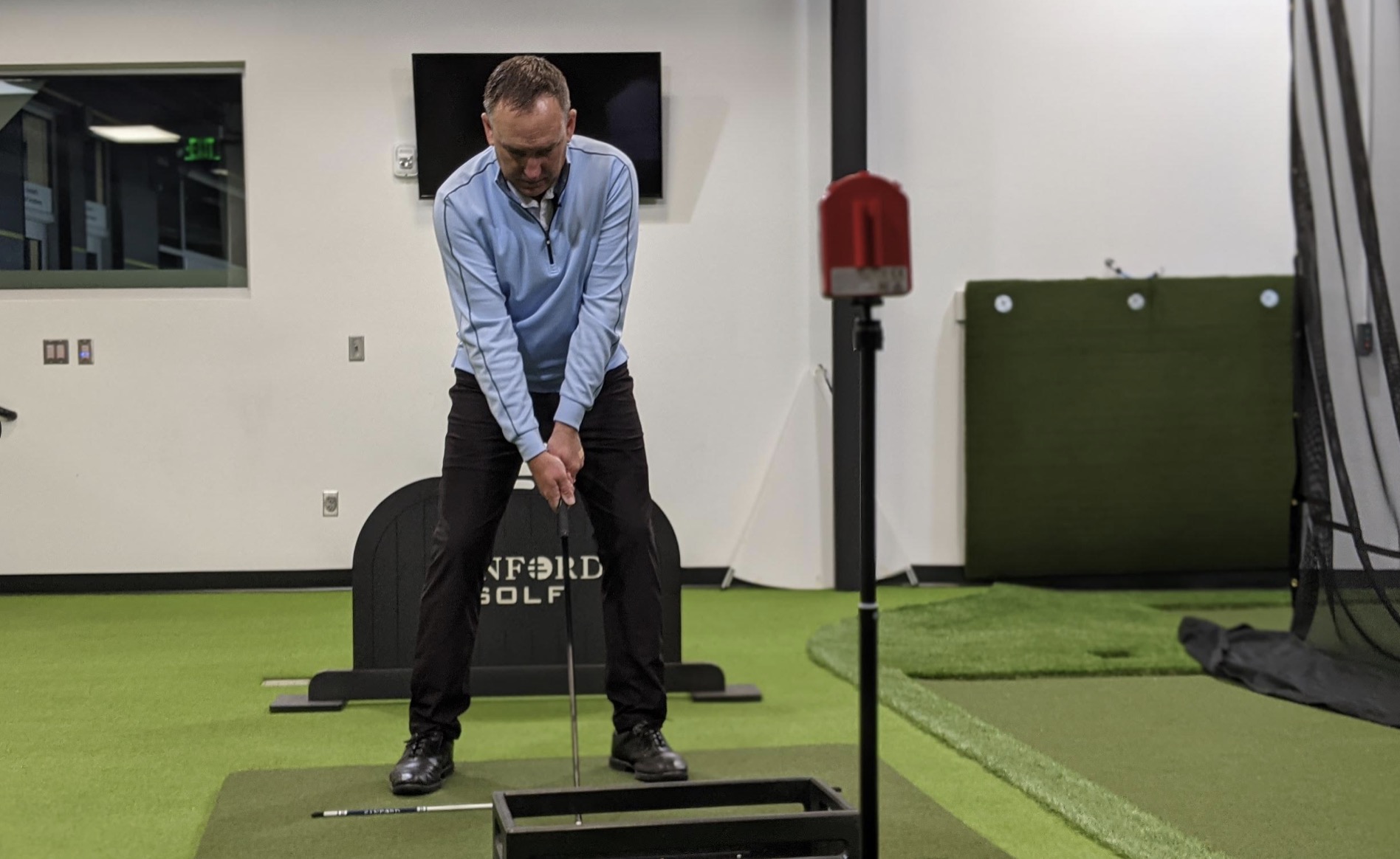
In This Article
- Should I Have a Strong, Weak, or Neutral Grip?
- What’s the Best Golf Grip to Fix a Slice?
- Tips for Adjusting Your Golf Grip on the Takeaway
- Tips for Correct Golf Grip on the Downswing
- FAQs About the Correct Golf Grip
- Next Steps for Fixing Your Slice
Should I Have a Strong, Weak, or Neutral Grip?
The biggest factor in delivering a square, open or closed clubface at impact is your grip. Generally speaking a weak grip will produce an open clubface while a strong grip will deliver a closed clubface. However, there are always exceptions to the rule. Our advice, strive for a… pic.twitter.com/rQVsWUfJ7g
— USGolfTV (@usgolftv) July 6, 2024
Most golfers get the best results from a neutral grip.
That said, you don’t have to look far to find top-tier players who excel using a strong or weak grip. And no matter which grip you prefer, understanding how each one affects the outcome of your swing will help you diagnose and cure grip-related swing issues.
Generally speaking, here’s what to expect from each type of golf grip:
Strong Grip
You’ll know you have a strong grip if:
- The V-shape created by the thumbs and forefingers of both hands is turned toward the trail shoulder.
- You see 3-4 knuckles on your lead hand.
- Your trail hand is rotated underneath your lead hand.
The likely result of a strong grip:
- You deliver a closed clubface at impact, reducing loft and creating a low ball flight.
- You might hook the ball.
- You’re great with higher lofted clubs like wedges, 9-irons, and 8-irons but aren’t getting the height you need when hitting through a lower lofted clubs like hybrids, fairways woods, and drivers.
Weak Grip
You’ll know you have a weak grip if:
- The V-shape created by the thumbs and forefingers of both hands is turned toward the lead shoulder.
- You see 0-1 knuckles on your lead hand.
- Your lead hand is rotated underneath your trail hand.
The likely result of a weak grip:
- You deliver an open clubface at impact, increasing loft and creating a high ball flight.
- You slice the ball.
- You’re great with lower lofted clubs like hybrids, fairways woods, and drivers but aren’t getting the distance you need with higher lofted clubs like wedges, 9-irons, and 8-irons.
Neutral Grip
You’ll know you have a neutral grip if:
- The V-shape points between the trail shoulder and ear.
- You see 2-2.5 knuckles on your lead hand.
The likely result of a neutral grip:
- A solid shot. For most golfers, this is the ideal golf grip
Of course, there are exceptions to every rule. What matters most is that you understand the relationship between grip and ball flight so you can adjust your hands to get the result you want.
What’s the Best Golf Grip to Fix a Slice?
First, let’s nail down the most basic aspect of proper grip: the position of the club in your hands.
When a lot of golfers start talking about correct golf grip, they fixate on one of two things:
- Grip strength
- Grip style
While it is true that both of these elements influence your golf swing, you’ve got to master this more fundamental issue first:
How to Hold the Club in Your Hand
A lot of golfers tend to grip their golf clubs in the palm of their hand. This kills your golf swing and causes nightmare golf shots like the slice.
When you hold the club in your palm, you limit mobility in your wrists. This gives you less control in both the backswing and the downswing. What you want to do instead is grip the club handle with your fingers.
Here’s a quick method for making sure you have the correct golf grip:
- Hold the golf club out in front of you so the shaft is vertical, perpendicular to the ground.
- Tilt the club head away from your body about 45 degrees.
- Position your lead hand on the club handle at an angle. You want the handle to pass across your hand from the base of the pinky to the middle knuckle of your index finger.
- Continue setting up your grip as you normally would.
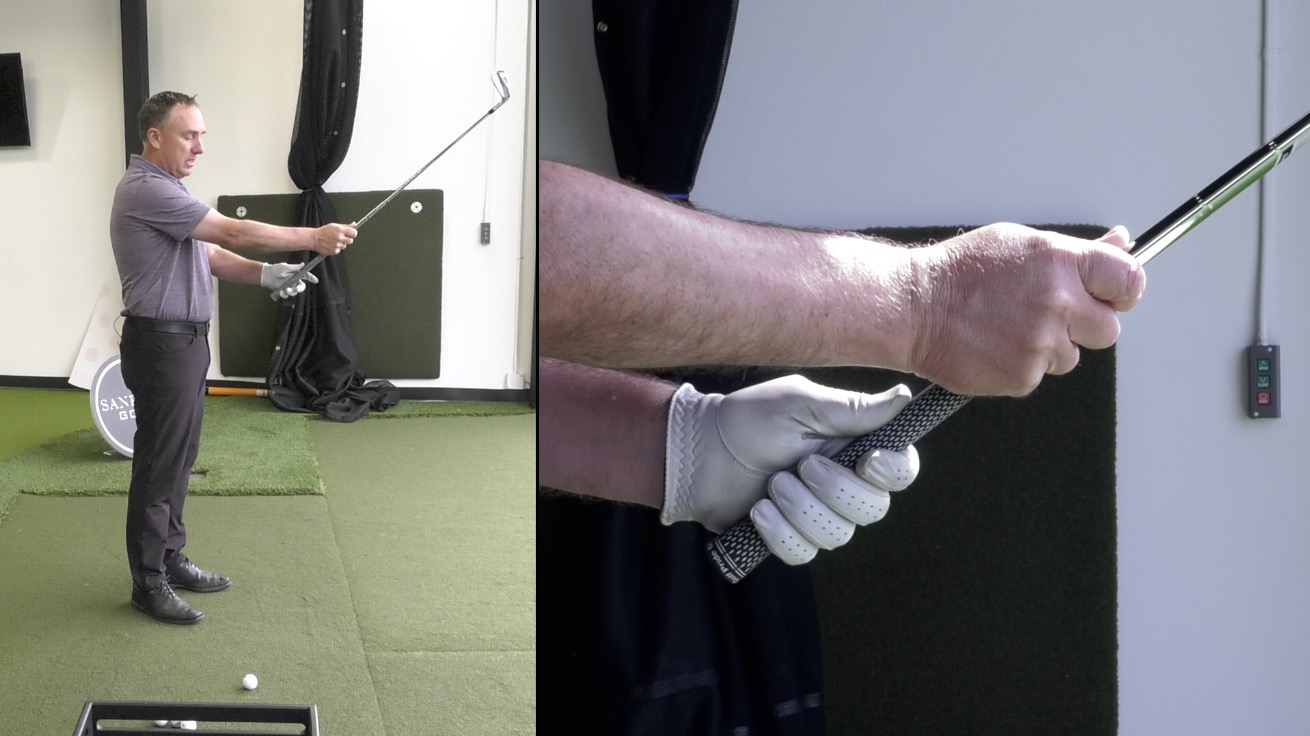
When you do this, you should feel that you’re gripping the handle in your fingers and not your palm.
How Do I Know if I’m Using the Correct Golf Grip?
One easy way to check whether you are gripping the club in your palm or your fingers is to just look at your golf glove.
If you notice natural wear and tear spread evenly over the surface of your glove, you’re doing great.
On the other hand, if you have just one or two really big holes or if you notice holes forming after only a few uses, you need to fix your grip.
Tips for Adjusting Your Golf Grip on the Takeaway
Now, let’s talk about what the correct golf grip looks like throughout your golf swing, starting with the takeaway.
There are a lot of swinging flaws that can kill your golf shots, but a bad wrist angle is one of the worst offenders. Your wrist angle on the takeaway influences the orientation of the club face.
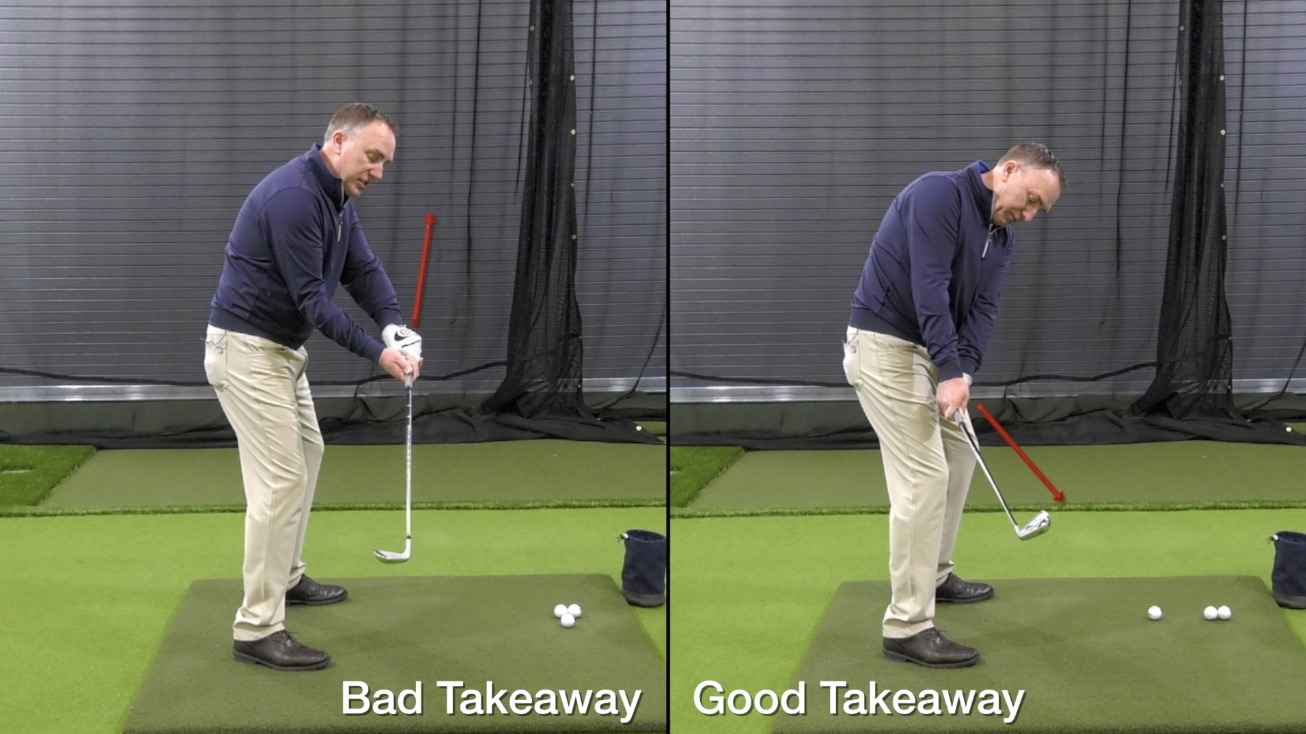
And as we all know a little too well, the success of your shot is determined by whether your clubface is opened, closed, or square.
Now, I am going to offer two different tips on the takeaway: one for golfers who practice and one for those who don’t.
Why is the advice different if the problem is the same?
Well, one tip is for golfers who don’t practice. It’s a tip that will fix this one problem—the slice—without having to get into other aspects of swing technique. You can make this change on the golf course today and immediately get rid of that driver slice.
However, those who are more serious about becoming a better golfer all-around won’t benefit from the quick-fix tip. They need to learn a technique that integrates with all the other elements of an ideal golf swing. My tip for them helps them fix the slice and sets them up for success with other challenges in the long-term.
The Takeaway for Golfers Who Don’t Practice
To perfect your golf grip on the takeaway, note the position of the logo on your golf glove.
As you swing away from the ball, you want to rotate the logo downward so it points at the ground.
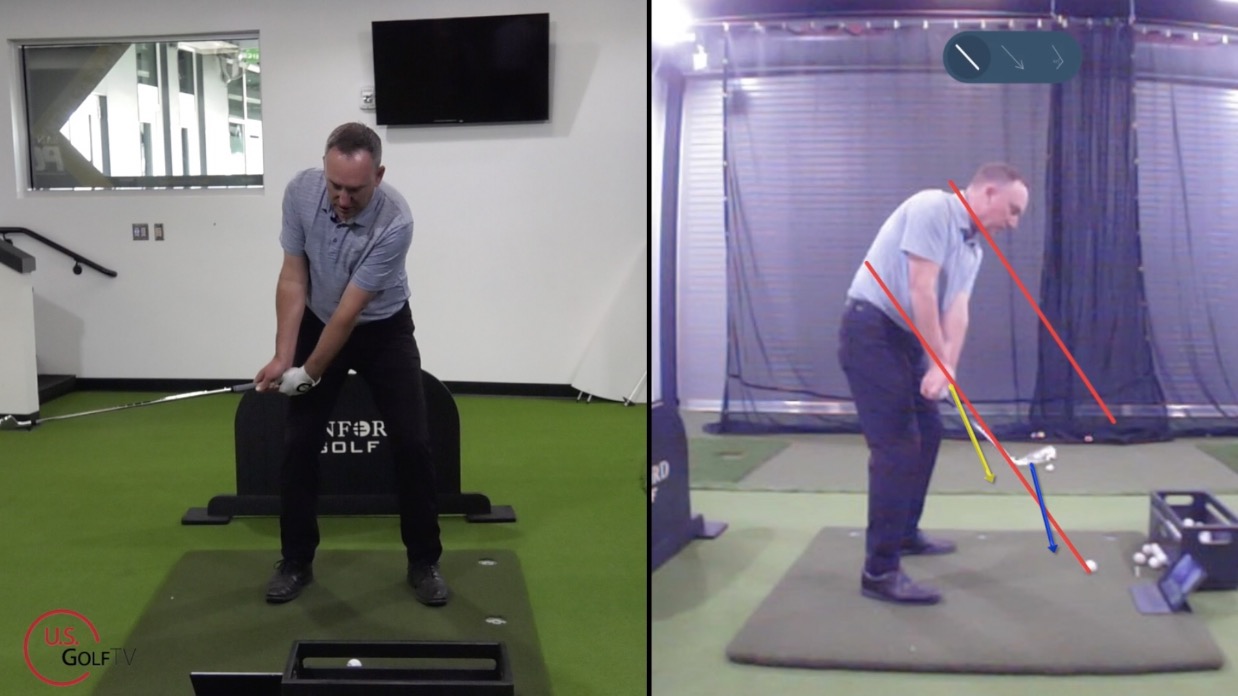
This rotation gets the club face in a closed position, and that closed position helps you correct the slice immediately.
The Takeaway for Golfers Who Practice
Again, we’re looking at the logo on your golf glove.
As you swing away from the golf ball, make sure the logo on your glove points more outward than downward. Think of pointing the logo towards the golf ball or away from your body.
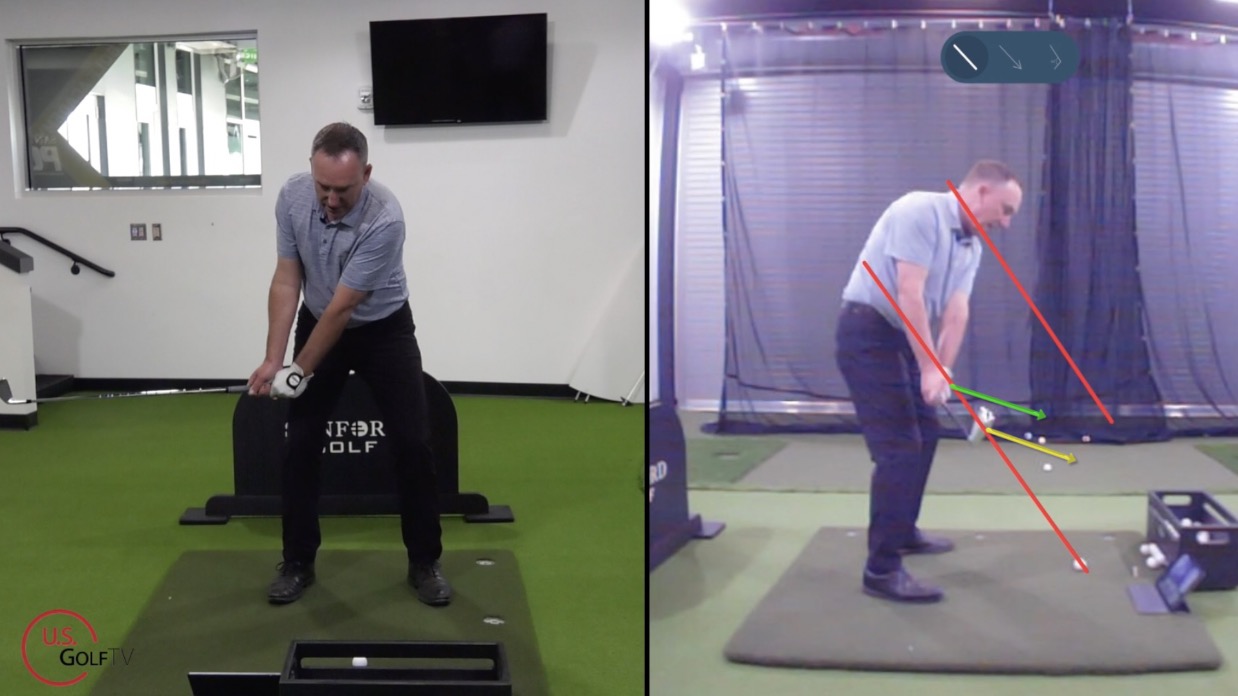
This results in a square club face.
Tips for Correct Golf Grip on the Downswing
Finding the correct golf grip for the downswing starts with checking your wrist angles at the top of your swing and in the transition.
Once again, which solution is best for you depends on whether you plan to invest time in mastering your overall golf game.
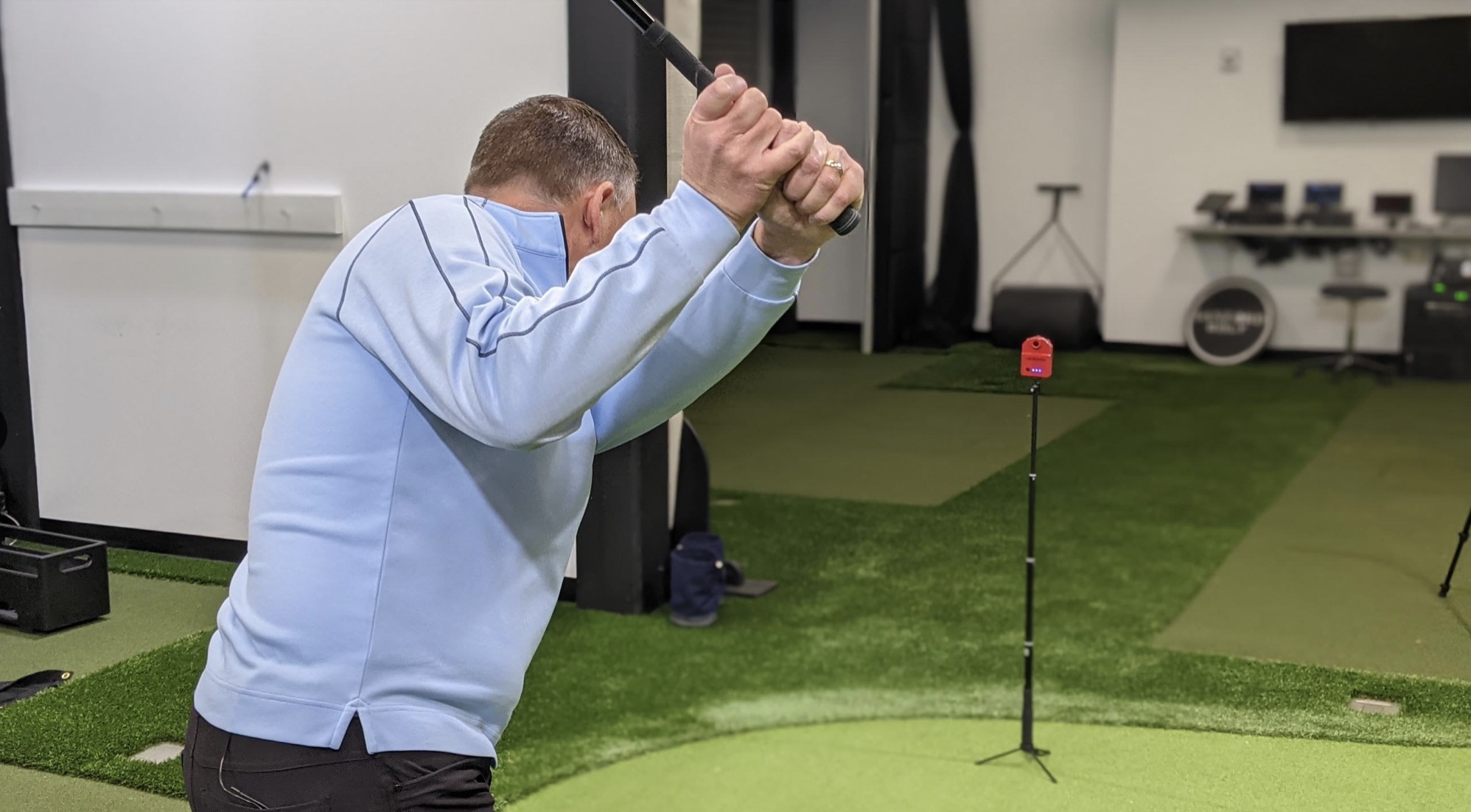
Top of the Swing for Golfers Who Don’t Practice
If you don’t like to practice or don’t have time to spend perfecting your swing technique, just do this:
Rotate the logo on your golf glove up towards the sky at the top of your swing.
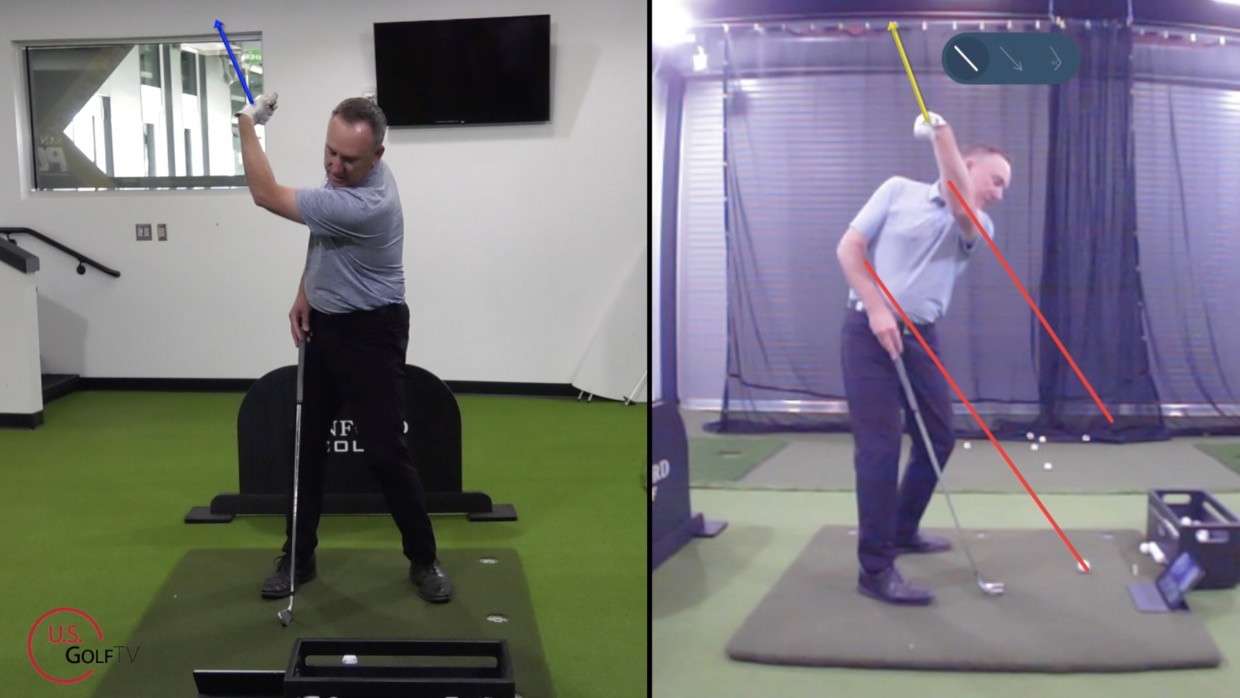
A lot of slicers tend to rotate the logo down as they prepare to go into their downswing. When you rotate upward instead, you close the club face and are far more likely to stop slicing.
Now, even though this is a quick-fix technique for golfers who don’t practice, you will see some great players use wrist flexion in this way. It isn’t common, but those professionals are out there, and they have a great game because of it.
Having said that, if you’re serious about improving your golf game, start with this next technique instead.
Top of the Swing for Golfers Who Practice
Once again, my goal for more serious golfers is to help you find more neutral positions within your golf swing sequence. This sets you up to practice other swing techniques with greater ease and more success.
As you prepare to take your downswing, check that your thumbs are underneath the club. This position squares the club face.
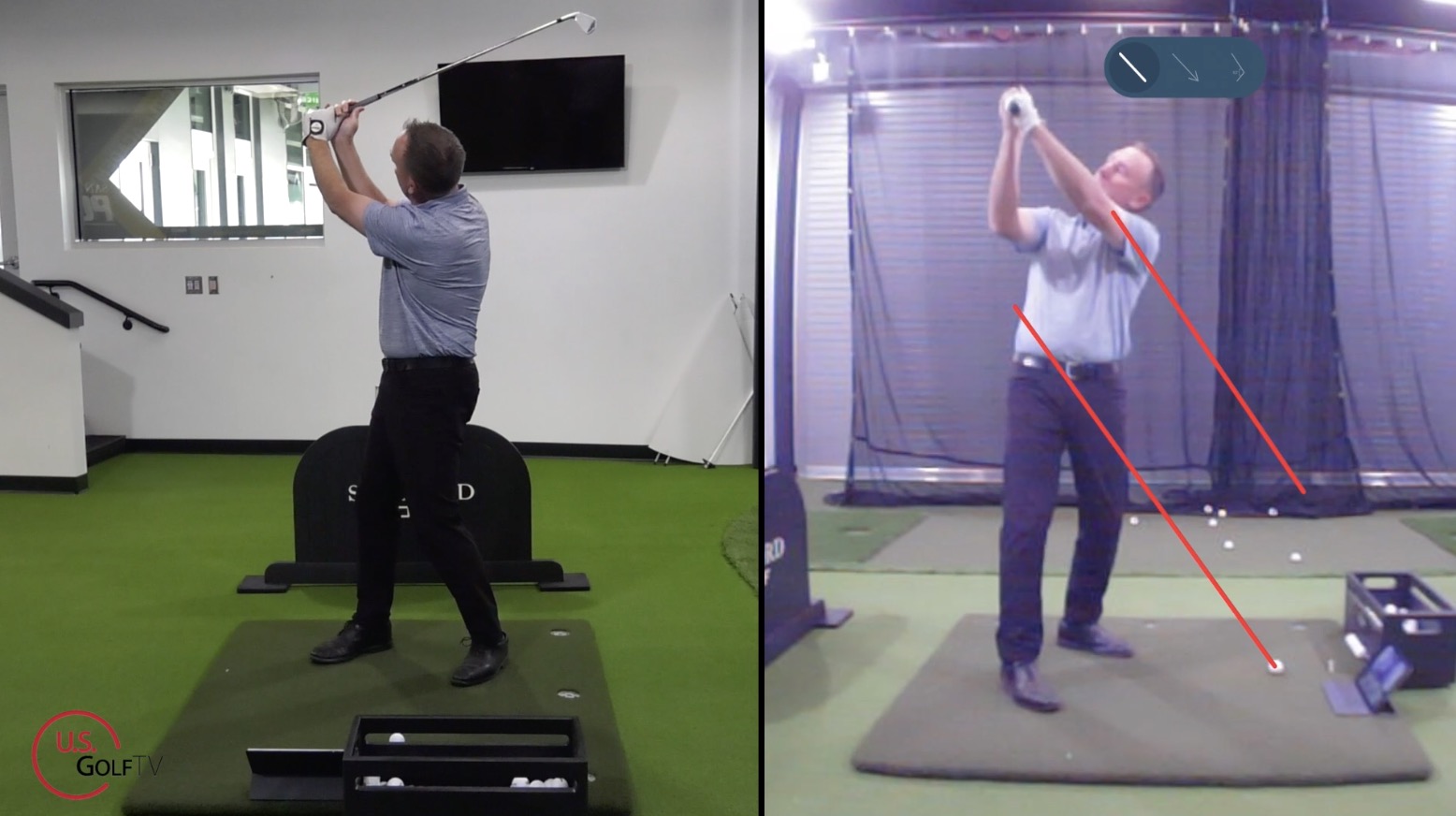
Bonus Tip: Swing Plane
Now, I won’t dig too deep into this, because we already have a great article on swing plane. But correcting your swing plane is a great way to cure a slice, so I’ll offer some quick insight right now.
On your downswing, think about keeping the club head inside what I call “The Corridor of Success.”
Imagine there is an imaginary line from the ball through your hips, running along the same angle as your club shaft.
Then, imagine a second, parallel line running along the same angle and intersecting the base of your neck.
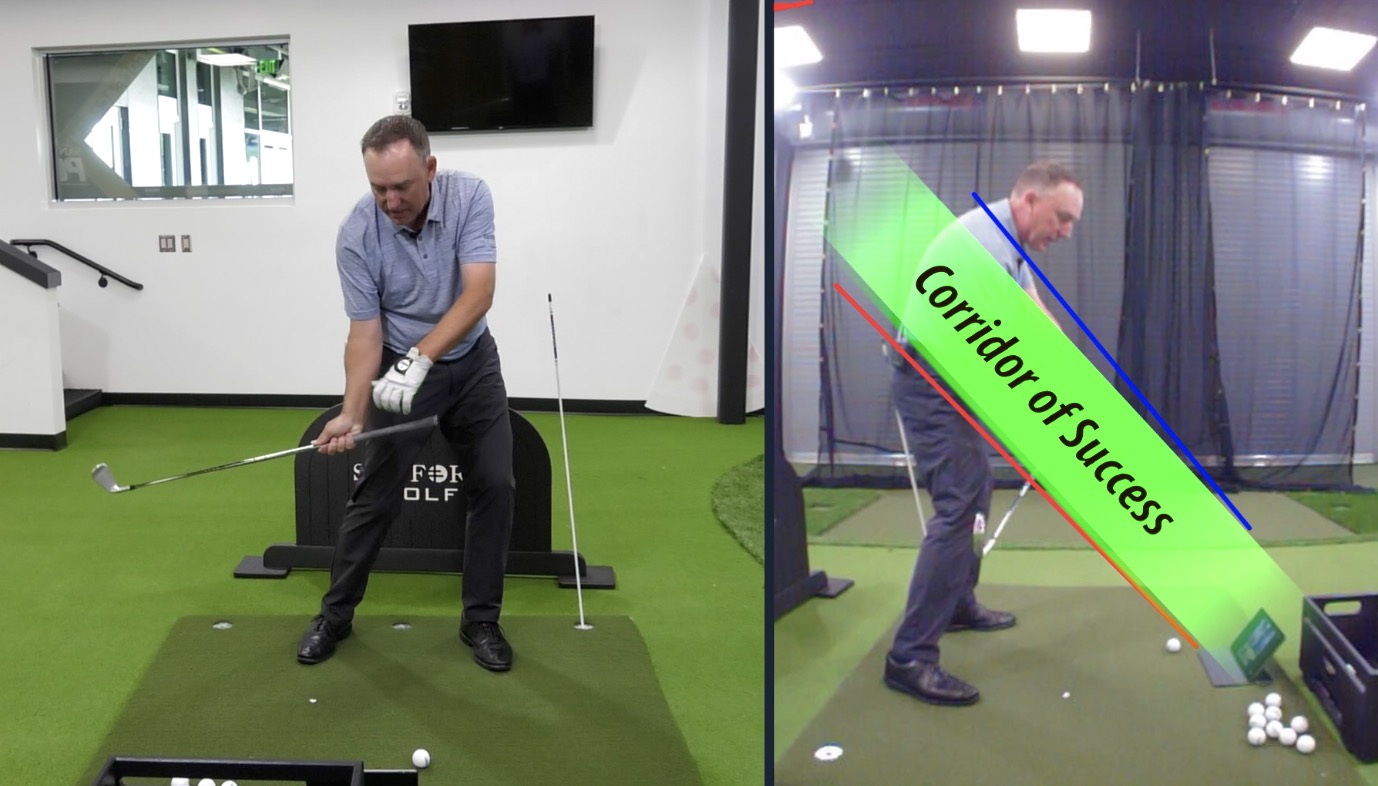
If you can keep the hands and club head between those lines, you are in the Corridor of Success.
Side note: The LiveView is a great tool for visualizing swing plane, as it allows you to draw actual lines on a real-time, mirror-image video of your swing. Practicing golfers should especially check out LiveView for improving their golf skills.
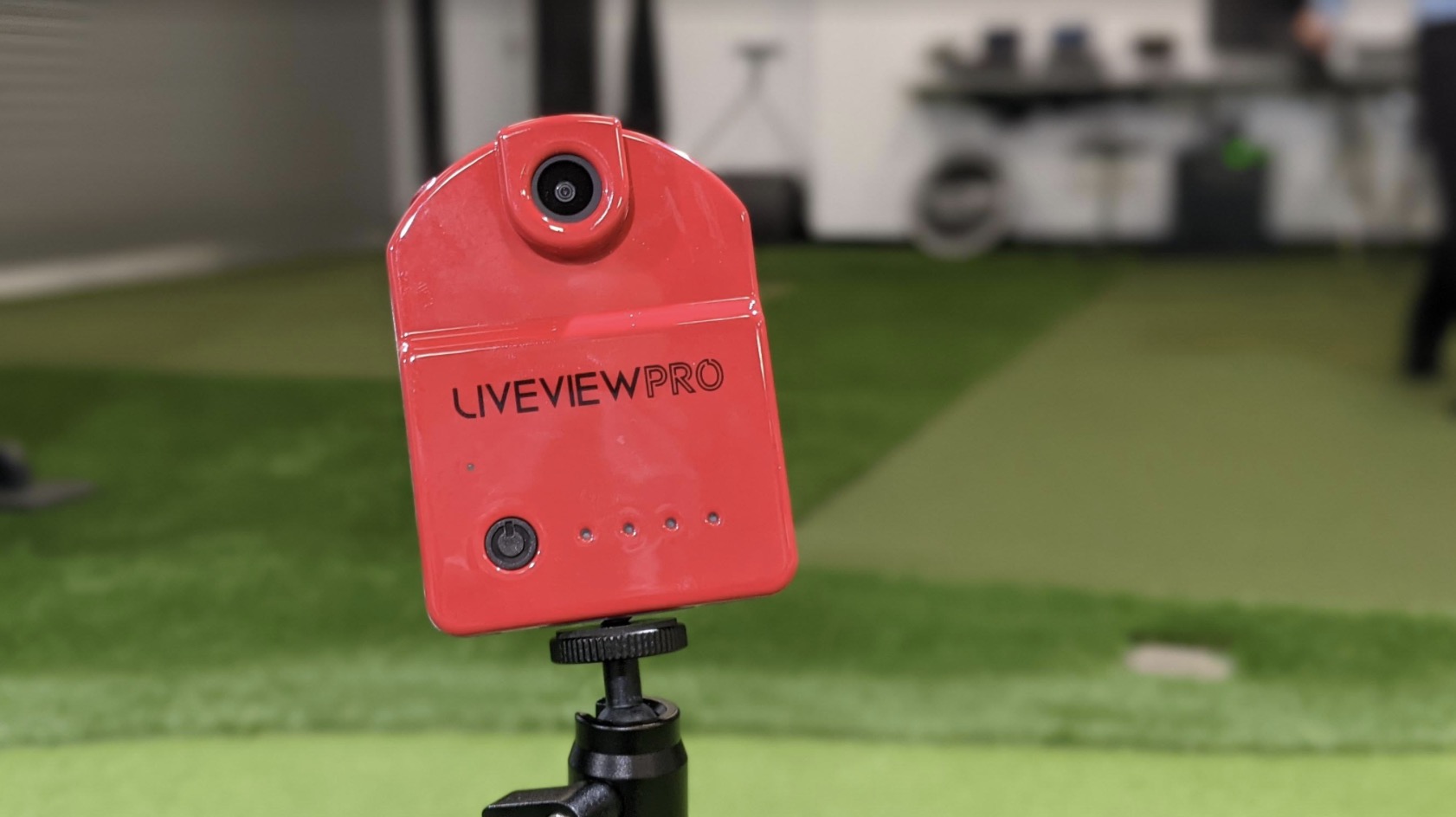
FAQs About the Correct Golf Grip
Does My Grip Really Impact My Golf Swing?
Most definitely. The way you grip the club affects mobility in your wrists, tension in your hands and arms, and your ability to control your swing motion. This detail can seriously make or break your contact.
Is a Strong, Weak, or Neutral Grip Best?
I typically encourage my students to use a neutral grip, but some golfers actually play their best with a strong or weak grip. What matters more is that you’re able to control the club with the grip strength that feels most natural to you.
What’s So Bad About Gripping My Club in My Palm?
When you grip the club in your palm, you create tension in your hands and wrists. This limits your ability to control your swing motion and can ultimately destroy your contact.
Next Steps for Fixing Your Slice
Now, there are a lot of adjustments you can make in your swing to fix the slice.
If you’re still struggling after correcting your golf grip, I suggest making sure you have the correct ball position. You may also want to make sure you understand the difference between hitting irons versus drivers.
But before you jump into any of that, start with correct golf grip. Here are some quick checklists for reference the next time you’re at the golf course.
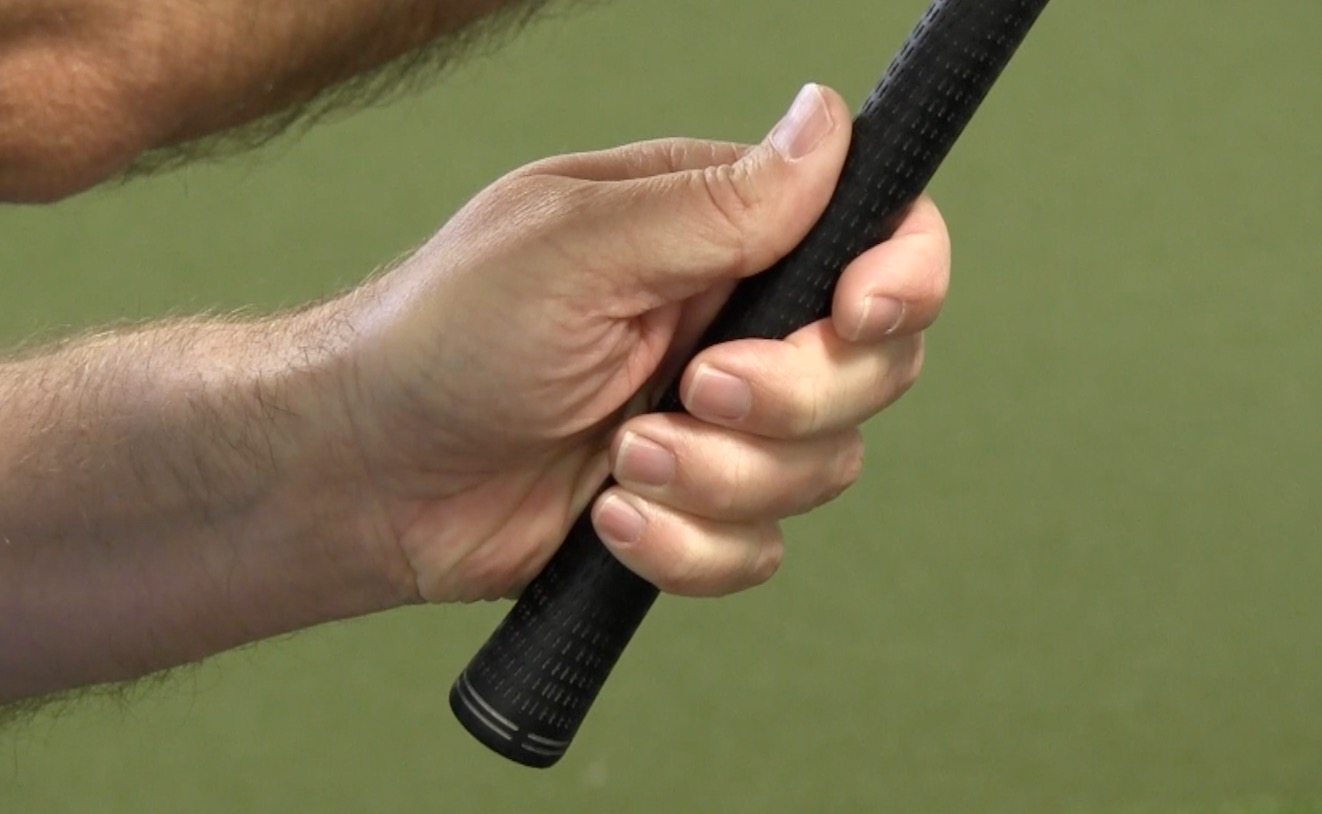
Golf Grip Checklist for the Golfer Who Doesn’t Practice
- Make sure you’re gripping the golf club in your fingers and not your palms. The club handle should run diagonally across your hand.
- Point the logo of your golf glove towards the ground on the takeaway.
- Rotate the logo of your golf glove towards the sky as you prepare for your downswing.
Golf Grip Checklist for the Golfer Who Practices
- Check your grip and make sure you’re holding the handle in your fingers. The club should cross from the base of your pinky finger to the middle knuckle of your index finger.
- Point the logo of your golf glove out away from you on the takeaway.
- Keep your thumbs on the underside of the golf club at the top of your swing.
And both non-practicing and practicing golfers should think about keeping the club head inside the Corridor of Success.
Make these small changes, and I guarantee you’ll be enjoying an improved game in no time.
Once you’ve seen the results, come back and let us know:
What Other Questions Do You Have?
Did these tips help cure your slice? Do you have any other questions about the golf grip? Do you advice of your own to share?
Jump into the comments below and join the conversation!
And now that you’ve mastered contact, how about adding some distance?
If you’re ready to take your game to the next level with customized coaching or one-on-one instruction, visit us at VLSCoaching.com. Or drop us an email at Info@VLSGolf.com and put COACHING in the subject line. We’ll get back to you right away.
About the Instructor
I’m PGA Teaching Professional Todd Kolb—a four-time Golf Digest Best-in-State Instructor, Amazon Best-selling Author, and Minnesota PGA Teacher of the Year. I’ve worked with students of all ages and skill levels in my 30 years of coaching, from first-timers to an LPGA major champion. I’m also the Director of Instruction for VLS Golf and USGolfTV.
My work with VLS Golf and USGolfTV revolves around helping the everyday golfer cut through overcomplicated traditional instruction to find solutions that actually work for them.


Excellent presentation! I just completed a putting clinic for some lady golfers. One of the things I told them is to think of a path to the cup. Paint a path with a 4” paint brush to the cup, keep the ball in that path and you will make a lot of putts! One lady went from 22 for 9 holes to 15 for nine and said the best think I though her!